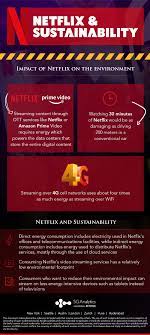Netflix has grown to become one of the world’s most popular entertainment companies. Netflix, Inc. began operations in 1998 by delivering physical copies of movies, programmes, video games, and other means of communication to customers via email. Netflix revamped its business model and expanded rapidly as a result of accelerated technological advancements. They’ve transitioned from physical releases to allowing consumers to stream their desired content anywhere and anytime they want.
The popular OTT platform has incorporated enhanced streaming technologies that have radically improved the overall business structure and revenue model of Netflix. The platform allows viewers to stream their OTT originals as well as a variety of TV shows, movies, documentaries, and other content.
Netflix earned gross revenue of over $6.14 billion dollars in the second quarter of 2020, up over 13% from the same quarter last year, indicating that the company will have another profitable year (Avada).
The Netflix Effect
The relentless rush of new shows on Netflix and various other online video streaming platforms is attracting binge watchers from across the globe and acting as a source of distraction, hampering their everyday productivity. The new concept of releasing an entire web series at once is fuelling the trend of binge-watching where people end up watching multiple episodes in a day.
For a variety of reasons, people across the world are increasingly attempting to justify spending their time in front of a television or digital devices. After a long day, people look forward to unwinding or just take some time to relax. Subscribers are indulging in ‘binge-watching’ to escape the perils of reality.
However, in the blink of an eye, one episode turns into multiple episodes. This is known as ‘The Netflix Effect’, where people lose track of time while watching a series, movie or television show. People are however, realizing that that they can’t stop watching a show after just one episode owing to the relentless curiosity about finding out what happens next Dropping grades, being late to work or university, not being active, gaining weight, and refraining from having a social life are all drawbacks for teenagers who binge watch on OTT platforms.
Impact of Netflix on the environment
Streaming services such as Netflix, Amazon Prime Video, Disney+, and YouTube recently made headlines when they voluntarily reduced bandwidth use in Europe as a result of Covid-19-induced lockdowns in several countries, which resulted in a substantial increase in the number of streaming users. These initiatives decreased video resolution while also reducing internet traffic to prevent internet outages.
This, on the other hand, highlights a related issue: the amount of energy consumed by high-resolution streaming, as well as the carbon footprint and negative consequences on our world. To stream content through OTT services like Netflix or Amazon Prime Video necessitates energy which powers the data centers that store the entire digital content of these platforms. Also, not to forget the energy required to transmit the content to consumers.
In 2020, according to a report by Paris-based think tank ‘The Shift Project’, watching Netflix content just for 30 minutes was as bad for the environment as driving 4 miles in a gasoline vehicle. The findings of this study got a considerable amount of media attention and in response, various scientists and columnists began fact-checking. After intensive research, the IEA (International Energy Agency) ascertains that watching 30 minutes of Netflix would be as damaging as driving 200 meters in a conventional car. In countries like France, where energy sources are majorly low-carbon, would be comparable to driving only 20 meters.
According to Netflix, 70% of viewing takes place on televisions, which consume significantly more energy than laptops (15%), tablets (10%), and smartphones (5%). The findings are highly dependent on the type of viewing device used, the network link used, and the resolution used.
A 50-inch LED television, for example, requires 100 times the amount of energy as a smartphone or 5 times the energy required to operate a laptop. Streaming over 4G cell networks uses about four times as much energy as streaming over WiFi.
Netflix and Sustainability
In its ESG study, the technology company stated that both direct and indirect energy use is either sourced from renewable sources or supported by renewable energy certificates and carbon offsets. Direct energy consumption includes electricity used in Netflix’s offices and telecommunications facilities, while indirect energy consumption includes energy used to distribute Netflix’s services, mostly through the use of cloud services.
Amazon Web Services and Google Cloud are Netflix’s primary cloud service providers. According to Amazon, using cloud technologies typically entails a higher cloud infrastructure occupancy rate as compared to conventional servers, resulting in greater reliability and thus lowering the consumption of energy. In conclusion, consuming Netflix’s video streaming services has a relatively low environmental footprint.

However, in many sectors, the proliferation of streaming platforms has resulted in an increase in environmental stress. Consumers who want to reduce their environmental impact can stream on less energy-intensive devices such as tablets instead of televisions, or reduce the quality of the video. In addition to using low energy-intensive devices for streaming videos, consumers can also help in lowering the carbon emissions by lowering the rate at which they upgrade their digital devices. This will help reduce the electronic waste as well as carbon footprint.
This could also spark a discussion about Netflix’s pricing. Here, the question is whether USD 8.99 a month for the basic package is a reasonable price that also considers the environmental impact of streaming. More generally, when determining a price for a service, media & entertainment companies must properly account for the environmental obligations of digital services.
Emerging technologies can make a difference
Technology companies will continue to play a significant role in reducing the impact of video streaming on environment, for example, by enhancing the energy efficiency – both now and in the future through emerging technologies, additionally, making investments in the renewable energy sector which will in turn improve the capability of powering data centres and networks of the organizations.
Designing and coding in a more sustainable way, such as enhancing video compression, may also help. A study by Association of Computing Machinery revealed how switching YouTube music videos to audio only while playing in the background could save energy and reduce emissions. It is crucial to understand the extent of emissions generated by digital technologies in comparison to other industries, as they account for about 1.5% of global carbon emissions (Information and Communications Technologies (ICT) for Sustainability).
In order to successfully achieve the Paris Agreement Goals, contribution from all sectors and technologies is necessary, and digital technologies are certainly not exempted. In reality, emerging technology like artificial intelligence (AI) could actually speed up climate action. However, without sound climate policies, AI could only end up assisting the cheaper extraction of oil or the extension of the life of coal power stations.
What is undeniable is the need to keep a close eye on Netflix’s and other emerging technologies’ and services’ exponential development to ensure society reaps full benefits while minimising negative effects, such as increased energy usage and carbon emissions. This would require rigorous research, critical decision-making, sound policies, and informed citizens, rather than relying on biased media reports.
Conclusion
This may be difficult, particularly for streaming services like Netflix, because emissions usually occur far away from their end-viewers. As a result, increasing public awareness about digital product emissions is critical. In 2020, Netflix’s carbon footprint was approximately 1 million metric tons. Recently, Netflix has made a commitment to achieve net zero greenhouse gas emissions by end of 2022. To achieve this aim, they will place their internal pollution reductions on a 1.5°C course that is in-line with climate science, and subsequently make investments in external projects that eliminate carbon from the environment.









